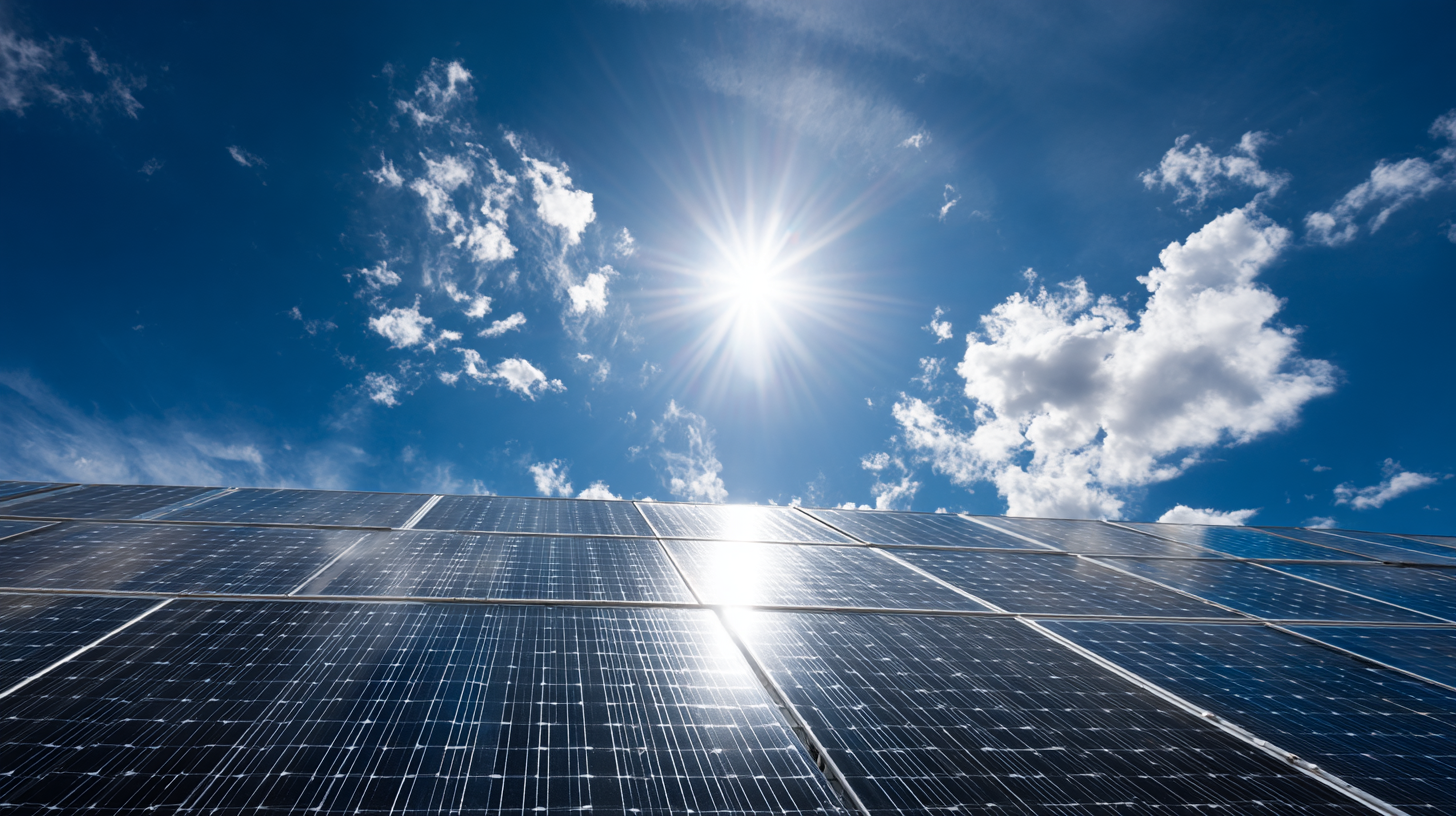Unlocking the True Potential of Solar Energy: Innovations Shaping a Sustainable Future
The global shift towards sustainable energy sources has ignited a remarkable transformation in the solar energy sector, making it a pivotal component of our future energy landscape. According to a recent report by the International Energy Agency (IEA), solar power is projected to lead the renewable energy sources, contributing up to 60% of the world's electricity needs by 2050. Innovations in photovoltaic technologies, energy storage solutions, and smart grid integrations are unlocking the true potential of solar energy, allowing for more efficient energy capture and utilization. Moreover, the cost of solar energy has plummeted by over 80% since 2010, according to the Global Solar Council, making it not only a sustainable option but also a financially viable one. This dynamic evolution is essential for addressing climate change challenges, enhancing energy security, and promoting economic growth, demonstrating that solar energy is not just a trend but a crucial pathway towards a sustainable future.

Harnessing Solar Power: Breakthrough Technologies Driving Efficiency
 Recent advancements in solar energy technology
are unlocking significant improvements in efficiency, helping to shape a sustainable future.
A notable breakthrough reported in Science Advances reveals that scientists have achieved a staggering
1,000-fold increase in solar electricity generation by utilizing
ultra-thin layers of barium titanate (BaTiO₃). This material's remarkable capability to
convert light effectively could redefine the landscape of solar energy systems, leading to more efficient power generation solutions.
Recent advancements in solar energy technology
are unlocking significant improvements in efficiency, helping to shape a sustainable future.
A notable breakthrough reported in Science Advances reveals that scientists have achieved a staggering
1,000-fold increase in solar electricity generation by utilizing
ultra-thin layers of barium titanate (BaTiO₃). This material's remarkable capability to
convert light effectively could redefine the landscape of solar energy systems, leading to more efficient power generation solutions.
Moreover, scientists have paved the way for exceptionally durable solar panels by creating components that are
200% stronger with new molecular structures. This innovation
suggests there are further possibilities to enhance solar energy efficiency beyond previously assumed limits.
In addition, recent developments in perovskite solar cells, which can now last
ten times longer, grant more access to affordable renewable energy.
As nations like Saudi Arabia ramp up their solar capacities, the integration of these
breakthrough technologies will be crucial in addressing the growing global energy demands while fostering
environmental sustainability.
Smart Grids and Solar: The Rise of Intelligent Energy Management Systems
The integration of smart grids with solar energy technology is revolutionizing how we manage electricity consumption and distribution. Intelligent Energy Management Systems (IEMS) leverage advanced data analytics and real-time monitoring to optimize energy flow and enhance efficiency. By analyzing consumption patterns, these systems can predict demand and adjust the energy supply accordingly, ensuring that solar energy is utilized effectively. This not only reduces wastage but also helps in balancing supply and demand, particularly during peak usage periods.
Moreover, smart grids enable decentralized energy production, empowering consumers to become prosumers—those who both consume and produce energy. Solar panels installed on residential and commercial buildings can feed excess energy back into the grid, facilitating a two-way energy exchange. This innovative approach fosters energy independence and sustainability, as communities can rely more on locally generated solar power while reducing their carbon footprint. As IEMS continue to evolve, they will play a crucial role in seamlessly integrating solar energy into daily life, paving the way for a sustainable future powered by clean energy.
Unlocking the True Potential of Solar Energy: Innovations Shaping a Sustainable Future
Innovative Solar Storage Solutions: Maximizing Energy Utilization
Innovative solar storage solutions are pivotal in maximizing energy utilization and enhancing the overall efficiency of solar energy systems. As solar energy generation can be intermittent, relying solely on sunlight often leads to wasted potential. Advanced battery technologies, such as lithium-ion and the emerging solid-state variants, are addressing this challenge by enabling homeowners and businesses to store excess energy during peak sunlight hours. This stored energy can then be utilized during times of low solar generation, effectively smoothing out energy supply and demand.
Moreover, the integration of smart energy management systems is transforming the way solar energy is consumed. These systems intelligently monitor energy usage and storage levels, optimizing when to use stored energy or draw from the grid. Innovations like grid-tied systems with battery backup further enhance energy resilience, allowing users to maintain power during outages. Collectively, these solar storage advancements are not only making solar energy more reliable but also advancing the transition towards a sustainable future by reducing dependence on fossil fuels and lowering carbon footprints.
Unlocking the True Potential of Solar Energy: Innovations Shaping a Sustainable Future - Innovative Solar Storage Solutions: Maximizing Energy Utilization
| Storage Solution | Technology Type | Energy Capacity (kWh) | Efficiency (%) | Expected Lifespan (Years) | Cost ($/kWh) |
|---|---|---|---|---|---|
| Lithium-Ion Battery | Chemical | 10 | 90 | 15 | 600 |
| Flow Battery | Chemical | 20 | 80 | 20 | 400 |
| Lead-Acid Battery | Chemical | 5 | 75 | 5 | 200 |
| Sodium-Ion Battery | Chemical | 8 | 85 | 10 | 450 |
| Compressed Air Energy Storage | Mechanical | 100 | 70 | 30 | 300 |
Sustainable Materials for Solar Panels: The Future of Eco-Friendly Energy
The future of solar energy hinges on the development of sustainable materials for solar panels, which are crucial for enhancing efficiency while minimizing environmental impact. Traditional solar panels often rely on materials that present challenges in terms of resource depletion and toxic waste. In contrast, innovative materials such as organic photovoltaics and perovskites are emerging as promising alternatives. These materials not only offer comparable efficiency but also utilize abundant resources, making them more sustainable in the long run.
Moreover, advancements in recycling technologies for solar panel components are transforming waste management within the industry. Using biodegradable materials and improving the recyclability of solar panels can significantly reduce landfill contributions. Companies are increasingly focusing on closed-loop systems, where end-of-life panels are transformed into new products, effectively creating a circular economy for solar energy. As innovations in sustainable materials continue to progress, the solar industry is poised to make significant strides toward a cleaner, greener future.
Solar Energy Integration: Strategies for Smart Cities and Communities
The integration of solar energy into smart cities and communities is becoming increasingly essential as urban areas seek sustainable solutions to their energy needs. According to a recent report from the International Energy Agency (IEA), solar power can potentially supply over 20% of the global electricity demand by 2040, making it a cornerstone of urban energy strategies. Smart grids, which utilize advanced technology to enhance electricity distribution, play a pivotal role in managing solar energy more effectively, allowing cities to optimize energy use and reduce carbon emissions.
Innovative strategies for solar integration include the development of solar microgrids and community solar programs. The U.S. Department of Energy notes that microgrids can enhance energy resilience, particularly in urban environments prone to natural disasters. Community solar initiatives empower residents to invest in shared solar projects, thus increasing access to renewable energy while also lowering costs. These approaches not only foster local energy independence but also encourage community engagement in sustainability efforts, ultimately shaping a greener future for urban living.

Related Posts
-

Comprehensive Insights into Energy Solutions Solar for Global Buyers
-

Ultimate Guide to Best Solar PV Panels Market Trends and Insights for 2025
-

Exploring Alternative Options for the Best Power Solar Panels in Global Markets
-

Unconventional Applications of Solar Energy: Innovations Shaping the Future of Sustainability
-

Navigating Global Standards for Power Solar Panels in Export and Import Markets
-

Unlocking Efficiency: A Deep Dive into Cutting-Edge Solar Power Solutions and Performance Metrics
